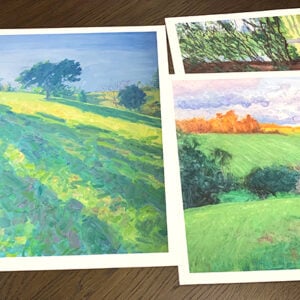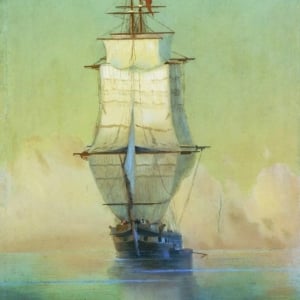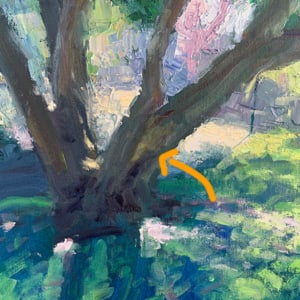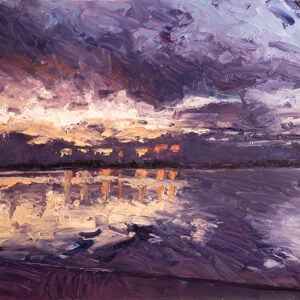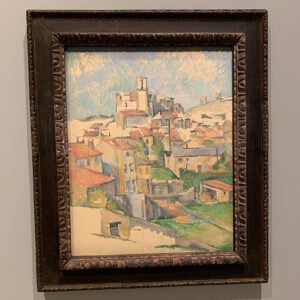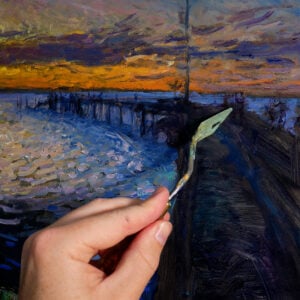Raking light refers to a light source which is set at an acute or nearly parallel angle to objects in a painting. Objects being hit by raking light will be half in light and half in shadow and will have long cast shadows.
Surrealist artists like Salvador Dali and Giorgio de Chirico used raking light to create mysterious and unsettling scenes, while earlier masters like Caravaggio and Rembrandt used raking light to really push the mood and drama in their works.
When a painting itself is illuminated by raking light, for example, a strong, overhead light in a gallery, it can reveal the subtle textures and brushwork in the paint. This is because it will create tiny shadows and highlights on the paint itself, reinforcing the contours and brushwork. There are some master painting examples of this at the end of the post.
Examples of Raking Light
Below are some examples of raking light, starting with a 17th century still life titled Quince, Cabbage, Melon and Cucumber by Juan Sánchez Cotán.
Raking light illuminates the fruit from the left-hand side and leaves the other side in shadow. The contrast between light and shadow creates a dramatic mood and interesting shapes. Also, notice how the cast shadows help reinforce the changes in plane. For example, the cast shadow from the large portion of the melon picks up the change in plane as it hits the small portion of the melon. The cast shadow of the cucumber picks up the change in plane of the table.

In The Red Tower, Giorgio de Chirico used exaggerated raking light to create ominous shadows in a large, empty plaza. The light source is so low-set that almost the whole foreground area is in shadow.

The Fortune-Teller by French Baroque painter Georges de la Tour features subtle raking light in a busy composition. The position of the raking light provides varying levels of illumination on the faces in the painting. The face on the far right is completely in light. The two central faces are partially illuminated, half in light and half in shadow. The two faces on the far left are completely in shadow. This may signify varying levels of importance of the figures in the painting.

Raking light was often used in conjunction with chiaroscuro by masters like Caravaggio. In The Calling of St. Matthew, the strong light source on the right creates sharp contrasts between light and shadow, intensifying the drama of the scene.

Dutch masters like Rembrandt and Vermeer also used raking light frequently in their work. In Vermeer’s The Geographer, notice how the artist used raking light to highlight the geographer and his work, leaving the rest of the composition mostly in shadow.

Below is Vincent van Gogh’s The Starry Night along with a close-up of the impasto brushwork. This is an example of what happens when raking light hits a painting itself. Notice in the close-up how you can see tiny highlights and shadows on the impasto brushwork. This adds a dynamic element to the painting and helps reinforce the texture and brushwork of the painting.


Want to Learn More?
You might be interested in my Painting Academy course. I’ll walk you through the time-tested fundamentals of painting. It’s perfect for absolute beginner to intermediate painters.
Thanks for Reading!
I appreciate you taking the time to read this post and I hope you found it helpful. Feel free to share it with friends.
Happy painting!
Dan Scott

Draw Paint Academy

